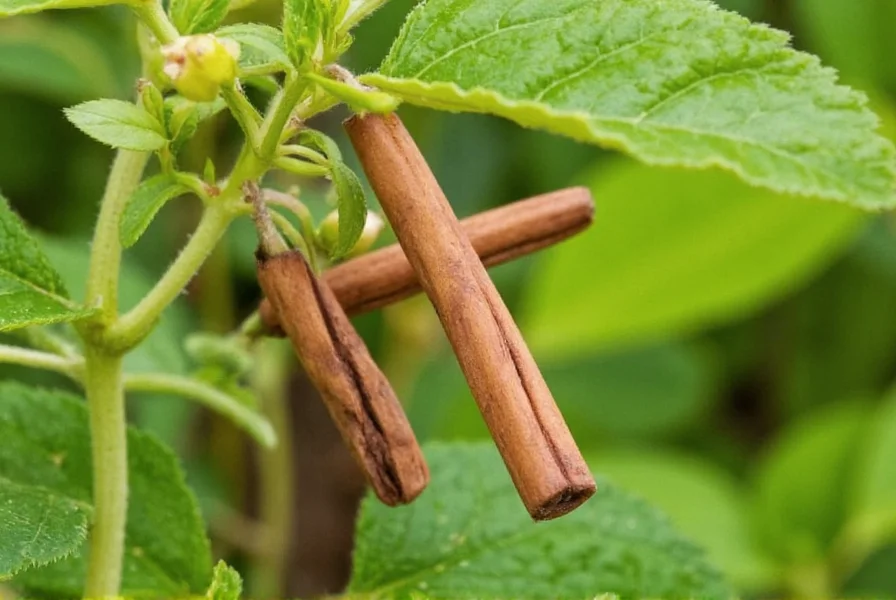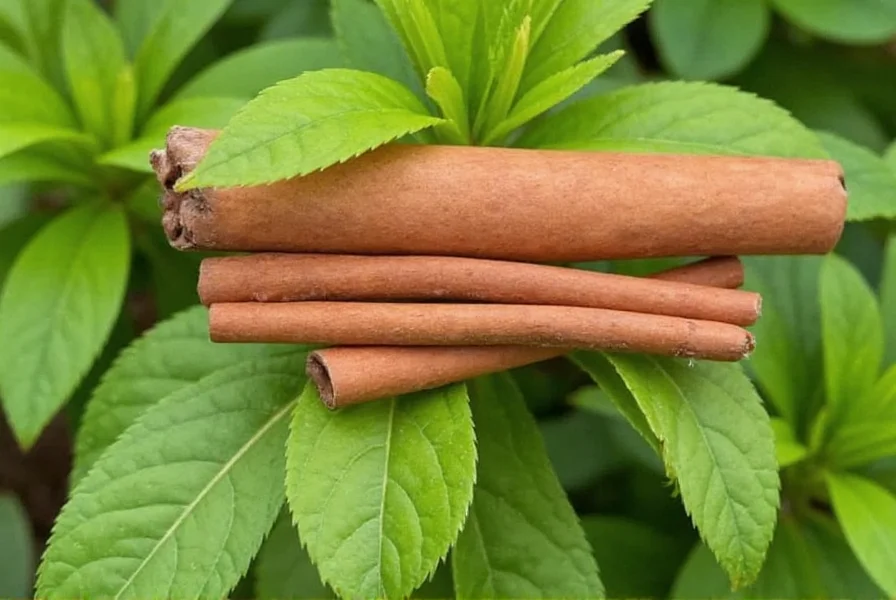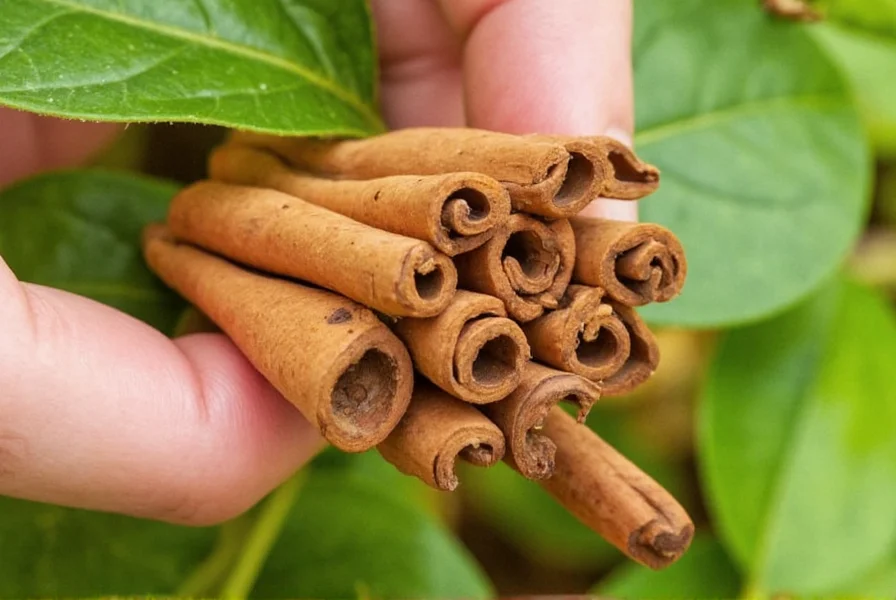Many home gardeners dream of growing their own cinnamon, the fragrant spice that enhances both sweet and savory dishes worldwide. While cinnamon trees thrive best in tropical climates, with proper care, you can successfully cultivate them in containers or suitable outdoor environments. This comprehensive guide details everything you need to know about growing cinnamon at home, from selecting the right variety to harvesting your first batch of aromatic bark.
Understanding Cinnamon Varieties
Before learning how to grow cinnamon, it's essential to know there are two primary types:
| Variety | Scientific Name | Flavor Profile | Growing Difficulty |
|---|---|---|---|
| True Cinnamon (Ceylon) | Cinnamomum verum | Milder, sweeter, more complex | Moderate |
| Cassia Cinnamon | Cinnamomum cassia | Stronger, spicier, more common | Easier |
For home cultivation, Cinnamomum verum (true cinnamon) produces the higher-quality spice but requires more specific conditions. Cinnamomum cassia is hardier and more forgiving for beginners learning how to grow cinnamon tree at home.
Essential Growing Conditions for Cinnamon
Creating the right environment is crucial when growing cinnamon from seed or cuttings. These tropical trees have specific requirements that mimic their native habitats in Sri Lanka and Southeast Asia.
Climate Requirements
Cinnamon trees need a consistently warm, humid environment to thrive. They grow best in USDA hardiness zones 9-11, where temperatures stay between 68-90°F (20-32°C) year-round. Frost will kill young cinnamon plants, so gardeners in cooler climates should grow them in containers that can be moved indoors during winter months.
Soil Requirements for Growing Cinnamon
The right soil mix significantly impacts your success with cinnamon plant care instructions. These trees prefer:
- Slightly acidic soil (pH 5.5-6.5)
- Excellent drainage (add perlite or sand to heavy soils)
- Rich in organic matter
- Maintained moisture without waterlogging
For container growing, use a mix of potting soil, peat moss, and perlite in equal parts. This combination supports healthy root development while preventing root rot, a common issue when growing cinnamon in containers.

Propagation Methods: Starting Your Cinnamon Tree
Learning how to grow cinnamon begins with proper propagation. You have three reliable methods to start your cinnamon tree.
Growing Cinnamon from Seeds
Fresh cinnamon seeds have the highest germination rate. Follow these steps for successful seed propagation:
- Soak seeds in warm water for 24 hours before planting
- Plant ¼ inch deep in seed starting mix
- Maintain consistent moisture (not soggy)
- Keep at 75-85°F (24-29°C)
- Expect germination in 2-6 weeks
Remember that cinnamon seeds lose viability quickly, so use fresh seeds for best results when growing cinnamon from seed.
Propagation from Cuttings
Cuttings produce trees that mature faster than seed-grown plants. For successful cinnamon tree propagation methods:
- Take 6-8 inch semi-hardwood cuttings in spring or summer
- Remove lower leaves, leaving 2-3 at the top
- Dip base in rooting hormone
- Plant in moist perlite or sand mixture
- Maintain high humidity with a plastic cover
- Roots typically develop in 6-8 weeks
Comprehensive Cinnamon Plant Care Instructions
Once established, proper care ensures healthy growth and eventual harvest. Follow these guidelines for optimal cinnamon plant care.
Watering Schedule
Cinnamon trees need consistent moisture but cannot tolerate waterlogged roots. During the first year:
- Water 2-3 times weekly in warm weather
- Reduce to 1-2 times weekly once established
- Always check soil moisture before watering
- Mulch to retain moisture and regulate soil temperature
Overwatering causes root rot, while underwatering leads to leaf drop. Finding the right balance in your cinnamon tree watering schedule is essential.
Fertilization Requirements
Feed your cinnamon tree regularly during the growing season:
- Use balanced 10-10-10 fertilizer every 4-6 weeks
- Alternatively, use organic compost tea monthly
- Reduce feeding in fall and winter
- Young trees need less fertilizer than mature plants
Sunlight Needs
Cinnamon trees prefer dappled sunlight in their natural habitat. For best results:
- Provide 4-6 hours of morning sun with afternoon shade
- Container plants can be moved to optimize light exposure
- Indoor plants need bright, indirect light near a south-facing window
- Too much direct sun causes leaf scorch
Harvesting and Processing Cinnamon
Patience is key when learning how long does it take to grow cinnamon. Most trees reach harvestable size in 2-3 years.
When to Harvest Cinnamon
Harvest cinnamon bark when stems reach 1.5-2 inches in diameter. The best time is during the rainy season when the bark separates easily from the wood. Look for these signs:
- Stems have matured to woody consistency
- Bark shows characteristic reddish-brown color
- Tree is at least 2 years old
Harvesting Process
Follow these steps for proper cinnamon harvesting:
- Cut 2-3 year old branches from the main tree
- Remove outer bark with a knife
- Separate the inner bark (cinnamon layer)
- Roll the strips into quills as they dry
- Air dry for several days until brittle
- Store in airtight containers away from light

Common Challenges in Growing Cinnamon
Even with proper cinnamon plant care instructions, you may encounter these issues:
Pests and Diseases
Watch for these common problems when growing cinnamon at home:
- Scale insects: Treat with horticultural oil
- Mealybugs: Remove with alcohol-dipped cotton swabs
- Root rot: Caused by overwatering; improve drainage
- Leaf spot: Remove affected leaves; improve air circulation
Container Growing Challenges
When growing cinnamon in containers, watch for:
- Pot-bound roots (repot every 1-2 years)
- Drying out too quickly (monitor moisture closely)
- Limited growth potential (choose larger containers)
Growing Cinnamon in Non-Tropical Climates
While cinnamon trees prefer tropical conditions, you can successfully grow them in temperate regions with these adaptations:
- Grow in containers that can be moved indoors during cold months
- Use a greenhouse or sunroom for winter protection
- Maintain humidity with pebble trays or humidifiers
- Provide supplemental lighting during short winter days
- Choose the hardier Cinnamomum cassia variety
With proper care, your container-grown cinnamon tree can thrive for many years, eventually producing harvestable bark even outside traditional growing zones.
Timeline for Growing Cinnamon
Understanding how long does it take to grow cinnamon helps set realistic expectations:
- Months 1-6: Seed germination or cutting rooting
- Months 6-18: Establishment phase, slow growth
- Years 1-2: Rapid growth phase, developing woody stems
- Year 2-3: First harvest possible
- Year 3+: Regular harvesting of mature stems
Remember that cinnamon trees can live for decades, providing multiple harvests each year once fully established. Proper cinnamon plant care instructions followed consistently will yield the best results.
Frequently Asked Questions
Can I grow cinnamon indoors as a houseplant?
Yes, you can successfully grow cinnamon indoors as a houseplant. Choose a dwarf variety or regularly prune to control size. Place near a bright south-facing window, maintain humidity above 50%, and keep temperatures between 65-80°F. Water when the top inch of soil feels dry, and fertilize monthly during growing season. Indoor cinnamon trees grow more slowly but can still produce harvestable bark after 3-4 years.
How often should I water my cinnamon tree?
Water your cinnamon tree when the top inch of soil feels dry to the touch. During warm months, this typically means watering 2-3 times weekly for young trees and 1-2 times weekly for established plants. Container-grown trees need more frequent watering than those in the ground. Always ensure proper drainage to prevent root rot, and reduce watering frequency during winter when growth slows.
When is the best time to harvest cinnamon bark?
The optimal time to harvest cinnamon bark is during the rainy season when the bark separates most easily from the wood. In tropical regions, this typically corresponds to spring or early summer. Harvest branches that are 2-3 years old and 1.5-2 inches in diameter. The bark should have a reddish-brown color and feel slightly soft when pressed.
How long does it take for a cinnamon tree to produce usable spice?
It takes approximately 2-3 years for a cinnamon tree to reach harvestable size. During the first year, the tree focuses on root development with minimal above-ground growth. Years 2-3 show more rapid growth, and by the end of the third year, branches will be thick enough (1.5-2 inches in diameter) to harvest for cinnamon production. Patience is essential when learning how to grow cinnamon at home.
What's the difference between Ceylon and Cassia cinnamon for home growing?
Ceylon cinnamon (Cinnamomum verum) produces a milder, sweeter spice but is more challenging to grow, requiring more specific tropical conditions. Cassia cinnamon (Cinnamomum cassia) is hardier, tolerates slightly cooler temperatures, and grows faster, making it better for beginners. Cassia has a stronger, spicier flavor and is what most commercial "cinnamon" actually is. For home growers in marginal climates, Cassia is generally the more practical choice for growing cinnamon from seed or cuttings.











 浙公网安备
33010002000092号
浙公网安备
33010002000092号 浙B2-20120091-4
浙B2-20120091-4